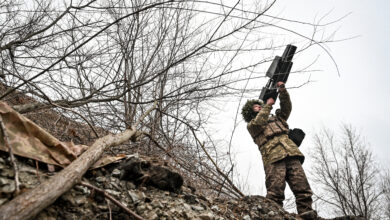The US Army has tested BAE Systems’ APKWS laser guidance kits on a counter-drone mission at Yuma Proving Ground, Arizona.
The capability transforms unguided rockets into “smart” munitions for precision strike applications.
The trial supports company efforts to market the APKWS to international military partners.
Aiming for ‘Immediate Impact’
During the demonstration, the army’s Joint Counter-Small Unmanned Aircraft Systems Office fired precision-guided rockets using the guidance kits against Class-2 unmanned aerial systems.
The army used 70-millimeter APKWS-guided rockets, while targets flown included drones weighing between 25 and 50 pounds (11 to 23 kilograms).
The test concluded with the rockets showing 100 percent effectiveness against drones flying over 100 miles (161 kilometers) per hour.
“Our engineers’ passion for APKWS technology led to the development of this new product designed to meet drones head-on,” BAE Systems Precision Guidance and Sensing Solutions Director Aimee D’Onofrio stated.
“This is a solution that comes at a remarkably affordable price point, and with APKWS already at full-rate production, we can ramp up to 25,000 units per year to make an immediate impact.”
‘Unprecedented Precision’
According to BAE, the APKWS system “bridges the gap” between anti-armor munitions and unguided rockets employed across the US joint forces.
Warheads deployed by the kit can pierce systems from aerial drones to ground-based platforms.
“A newly developed proximity fuze for the standard M151 warhead allows the laser-guidance kits to target Class 2 and Class 3 drones, which typically weigh less than 55 pounds,” the company said.
“The fuze retains the legacy point denotation capability for maximum flexibility of the weapon in the field.”
“APKWS now enables rockets to engage and destroy drones at a fraction of the cost of existing C-UAS systems with unprecedented precision.”












